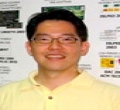Hybrid Electrical Energy Storage Systems
| Speaker | Prof. Naehyuck Chang Seoul National University |
|||
| CECS Host | Professor Pai Chou | |||
| Location | EH 2111 | |||
| Date & Time | July 12 , 2011 Lecture begins at 10:30am |
|||
| Abstract | Electrical energy is a high-quality form of energy in the sense that it can be easily and efficiently converted into other forms of energy, and furthermore it can be used to control other forms of energy. Unfortunately, electricity supply and demand are typically not balanced with each other. Storage of excessive energy and compensation of the energy shortage can significantly mitigate the over-investment in the generation facilities.
Like memory devices, no single type of electrical energy storage (EES) element can fulfill all the desirable requirements. Despite active research on the new EES technologies, it is not likely to have an ultimate high-efficiency, high- power/energy capacity, low-cost, and long-cycle life EES element in the near future. We propose an hybrid electrical energy storage (HEES) system that consists of two or more heterogeneous EES elements, thereby realizing the advantages of each EES element while hiding their weaknesses. Compared with the conventional homogeneous EES systems, HEES systems provide high output power and energy density as well as high power conversion efficiency and low self-discharge at a low capital cost. Cycle efficiency of a HEES system, which is defined as the ratio of energy which is delivered by the HEES system to the load device to energy which is supplied by the power source to the HEES system, is one of the most important factors in determining the overall operational cost of the system. We formulate the HEES management problems and project them into computer memory system design and management. We break the HEES management problems into charge allocation into different banks of EES elements, charge replacement (i.e., discharge) from different banks of EES elements, and charge migration from one bank to another bank of EES elements. Even a hybrid EES system cannot achieve high cycle efficiency if their storage banks have a fixed power and voltage rating because the optimal power capacity and voltage rating varies by the application and the state of charge (SoC) of the storage bank. Bank reconfiguration dynamically changes the array structure of an EES bank and maximizes the efficiency. In this talk, we start from introduction to the concept of HEES systems including EES element characteristics and power converter characteristics. The main body of this talk is charge allocation, migration, optimization, and bank reconfiguration. The HEES research is recently brought up, and thus there are a lot of important open problems. We will conclude this talk with remarks on the future work. |
|||
| Biography |
Naehyuck Chang is a Full Professor in Dept. of Electrical Engineering and Computer Science, Seoul National University, Korea. He was a Visiting Associate Professor at Arizona State University in 2005, and a Visiting Professor at University of Southern California in 2009-2010. He serves (and served) as Technical Program Committee of major EDA and embedded systems conferences and symposia including DAC, ICCAD, ISLPED, DATE, ASP-DAC, GLS-VLSI, ISQED, PATMOS, ESTIMedia, ICCD, and so on. He served as the TPC Co-Chair of RTCSA in 2007, ISLPED in 2009, and ESTIMedia in 2009 and 2010. He was Vice GC of ISLPED 2010 and is General Co-Chair of ISLPED 2011. He is also General Chair of ESTIMedia in 2011. He will serve as a TPC Co-Chair of CODES+ISSS 2012. He is an Associate Editor of IEEE TCAD and ACM TODAES, and editorial board members of JOLPE and JEC. He is a guest editor of ACM TODAES in 2011 and TECS for low-power design and embedded multi-media systems in 2010 and 2011. He also serves as the Chair of ACM SIGDA Low-Power Technical Committee, ASP-DAC SIGDA Representative and ACM SIGDA Executive Committee (Technical Activity Chair). He is a Senior Member of ACM and IEEE. |

